JHP Newsletter - 2007, No. 1, 1 March
Greetings from South Africa. I've recently completed a successful James Hager Photography photo safari to Tanzania, and have begun six weeks of shooting in South Africa on my own.
Travel: Tanzania
This trip to Tanzania was quite different than my previous visits because the region received significantly more rain in December than usual, and the saturated ground, coupled with more-frequent rains in January and February, made some locations within the parks inaccessible. The more-frequent rains also reduced the amount of good light for shooting during the safari, but there were still ample opportunities to generate good images.
The first major shooting destination was Ngorongoro Crater, and the bad weather really effected shooting there. We stayed in a lodge on the Southwestern rim of the crater, and on that side of the crater, there's a one-way road down into the crater and another one-way road back up out of the crater. Because of the extremely soggy ground, it wasn't possible to get from the descent road to the ascent road inside the crater, so we were forced to exit the crater on the Eastern side and then drive almost 1.5 hours along the rim to get back to the lodge. Of the two shooting days, the weather was only really good for one morning which is when I took the following images. Kori Bustards (below left) are the heaviest birds that can fly, and I've seen the males perform part of their courtship display before (the puffed out neck). This was the first time I've seen and been able to shoot one with the tail also raised, and it was in great light too. Cape buffalo are usually about as exciting as domestic cattle, but with some great light, they do make good subjects. Oxpeckers (One is perched on the Cape buffalo's head.) are usually described as having a symbiotic relationship with their hosts (large mammals) because they clean off the flies that are attracted to open sores. However, oxpeckers also tend to keep the sores open, thus attracting even more flies — can you say "parasitic relationship"?
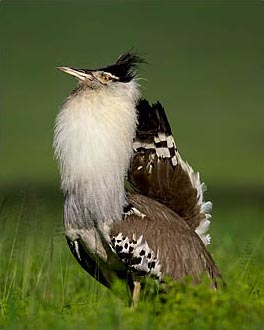
1/1000 sec, f8, ISO 200
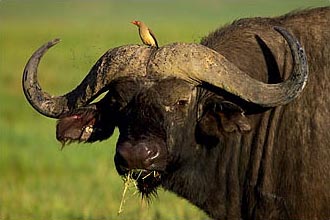
1/250 sec, f8, ISO 200
The main destination of the trip was Serengeti National Park. We started off with three nights in the Seronera region in the center of the park which has an open woodland habitat which is good for birds and leopards. We saw four leopards, an unusually large number, and I was able to take some half-decent shots of one. We also spent a wonderful morning at a hippo pool and I captured several hippos yawning (below left). Another good subject in this area is the olive baboons (below right) — always love the baby baboons.
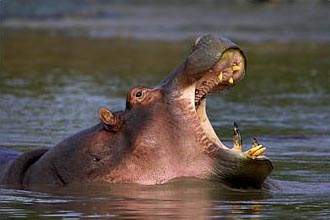
1/500 sec, f8, ISO 320
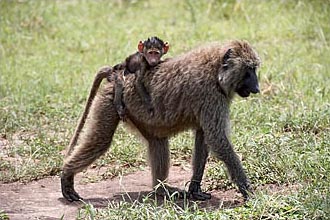
1/500 sec, f8, ISO 400
Then we spent seven nights in the southern Serengeti camped at Naabi Hill. This provided a dry location compared to the very wet area around Lake Ndutu where I had planned to stay, and it also provided closer access to "The Migration." About a million wildebeest migrate through the southern Serengeti in January and March (below left) in order to give birth to their babies in the short grass planes. The females give birth that is, the males are just along for the trip at that point. The short grass makes it easier for them to spot predators, and provides an area of relative safety to accomplish delicate task of giving birth. Unfortunately, we didn't see any give birth on this trip. I did see one from afar about 15 minutes after it had given birth as we were traveling from Ngorongoro to the Serengeti. The babies that had been born in the Serengeti were born in the very early morning before we could get out to the herd. So, I'll have to go back. :) The baby in the image (below right) is probably about three hours old.
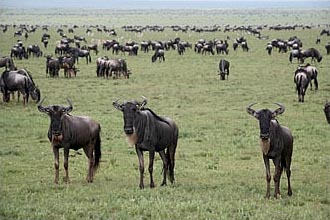
1/250 sec, f13, ISO 400
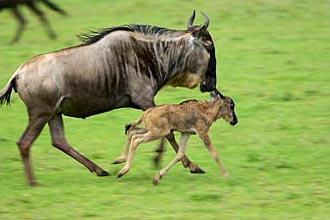
1/90 sec, f11, ISO 100
The two male lions (below left) were grooming in some nice early-morning light. The following morning, in the same area as the image of the lions was taken, this spotted hyena (below right) was carrying away part of a zebra leg, probably from a lion kill.
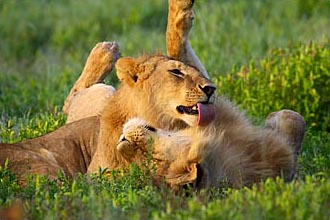
1/180 sec, f8, ISO 400
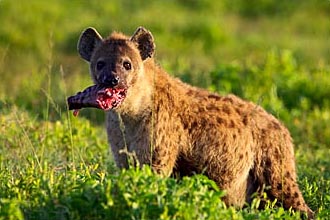
1/250 sec, f8, ISO 400
Raptors, and bird life in general, are plentiful. This female Common Kestrel (below left) was quite cooperative and let us shoot it from several perches right by the main road in the park. Dik diks (below center) are very shy and very small, and I was able to shoot several different individuals on this trip. Black-backed jackals (below right) are fox-sized animals that usually help clean up lion kills during and after the hyenas are involved.
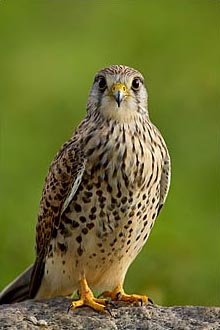
1/350 sec, f8, ISO 400
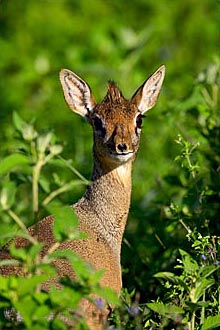
1/500 sec, f8, ISO 200
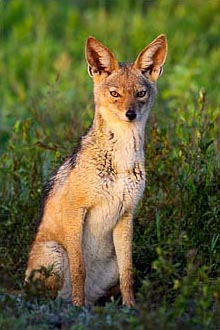
1/60 sec, f8, ISO 400
Probably the most interesting subject I shot was an East African Land Snail (below left). It's probably not at the top of anyone's list of favorite African animals, but this guy (or gal), which was about 4 in (10 cm), was moving along some open ground where we had stopped for breakfast, and I had a ball shooting it. We saw lots of cheetah on this trip, but most of them were in bad light. This gal (below right) was sweating out the heat of the afternoon in the open plain while waiting for some food, like a Thompson's gazelle, to walk by, and a passing cloud created some diffuse light to improve shooting conditions.
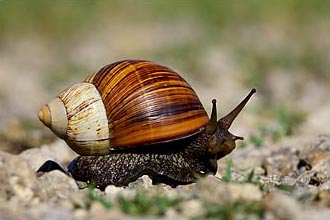
1/350 sec, f11, ISO 200
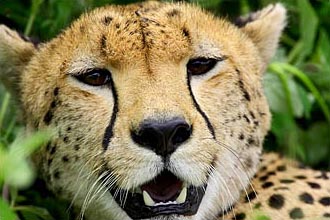
1/250 sec, f8, ISO 200
I'll let you know how the trip to South Africa goes when I return.
Take care, and happy shooting.
— James
James Hager Photography :: www.jameshagerphoto.com




